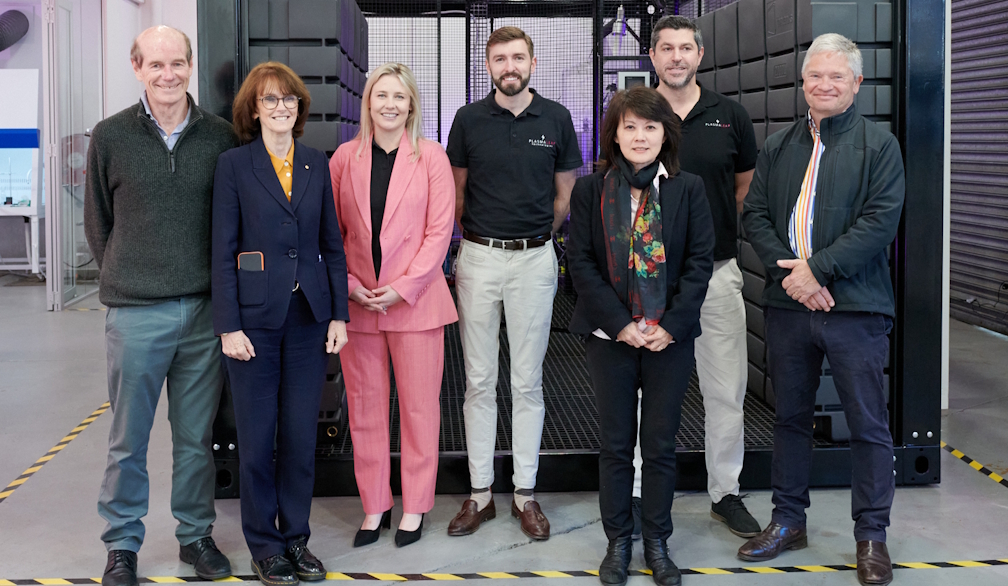Creating Fertiliser and Fuel From Thin Air

Australian farmers could soon see their fertiliser costs drop by 10%, thanks to a groundbreaking technology developed by homegrown startup PlasmaLeap. This innovation promises to put money back in farmers' pockets and revolutionise the global fertiliser industry, potentially reducing its massive carbon footprint.
Australia consumed approximately $4bn of fertiliser in 2023, with the average farmer spending almost $300k a year on fertiliser. Using PlasmaLeap’s technology, farmers could save up to $30,000 annually, possibly saving up to $400 million for Australian farmers each year.
PlasmaLeap's technology marks a significant departure from the century-old Haber-Bosch process, which has been the backbone of fertiliser production since the early 1900s. While incredibly efficient, the Haber-Bosch process relies heavily on fossil fuels and produces significant CO2 emissions.
"The Haber-Bosch process has reached its limit. It's incredibly energy-efficient, but it achieves this by using cheap gas and releasing CO2 to get the hydrogen. It only works on a large scale, necessitating long-distance transportation," said Professor PJ Cullen, co-founder and Chief Scientist at PlasmaLeap Technologies.
In contrast, PlasmaLeap's technology operates with renewable electricity, air, and water. The company has achieved production rates that make it competitive with the traditional process, reaching 20 kilowatt-hours per kilogram for green ammonia production.
"We've reached a number that makes us competitive. Critically, the company recently achieved production rates of 20 kWh/kg for green ammonia and less than 10 kWH/kg nitrates. While the Haber-Bosch process is around 10 kWh/kg for Ammonia, our technology eliminates transportation costs, making us economically viable," said Professor Cullen.
This breakthrough could have far-reaching implications beyond just cost savings for farmers. Fertiliser costs directly impact food prices. Recent global events led to stockpiling and a quadrupling of fertiliser prices. By enabling localised production, PlasmaLeap's technology could significantly enhance the security of food supply.
Moreover, the environmental benefits could be substantial. The current global fertiliser production and distribution system is responsible for CO2 emissions equivalent to the entire aviation industry. PlasmaLeap's process, using only air, water, and electricity, eliminates CO2 from the equation.
"We're not just tweaking the process; we're fundamentally reimagining it. The way it's currently done makes no sense. We take nitrogen and hydrogen – ingredients available everywhere – and concentrate production in a few countries like India, China, and Russia. Then we ship it globally, adding unnecessary CO2 emissions," said PJ Cullen, Chief Scientist.
“Without feasible, commercially viable solutions for green Ammonia production, net zero can’t be achieved,” he added.
The key to PlasmaLeap's potential success lies in its economic competitiveness. By eliminating transportation costs, utilising renewable power generation, and accessing carbon credits, the company expects to offer farmers discounts on fertiliser in the region of 10%. Graham Gall of Dawson River Pastoral Co Pty Ltd described the technology as "paradigm-shifting" for the agricultural sector, offering greater self-reliance and sustainability.
“In Australia, almost all our nitrogen fertilisers are sourced from overseas, leaving us vulnerable to global supply chain disruptions and price fluctuations. PlasmaLeap's solution allows us to produce nitrogen on-farm using green energy sources, which is a game-changer. More importantly, it offers the entire agricultural industry a new level of self-reliance and sustainability," said Mr Gall.
“Our innovative approach has already generated significant market interest, with $140 million in ARR potential pre-sales from the agricultural and energy sectors during our initial expression of interest campaign. The appetite for our technology is immense locally and globally," said Samantha Cullen, Co-founder and Chief Commercial Officer.
PlasmaLeap's technology extends beyond agriculture, with groundbreaking applications in sustainable hydrocarbon fuel production, including methanol and jet fuel pathways.
Agricultural fertilisers currently account for about 70% of the global ammonia market, valued at approximately US$100 billion annually, which is expected to reach US$260 billion by 2050. This growth is driven by emerging applications in heavy industry (shipping, trucking) as a clean fuel, and ammonia's potential as a cost-effective, stable hydrogen carrier for the global hydrogen transport economy.
For more information, visit PlasmaLeap Technologies website.









